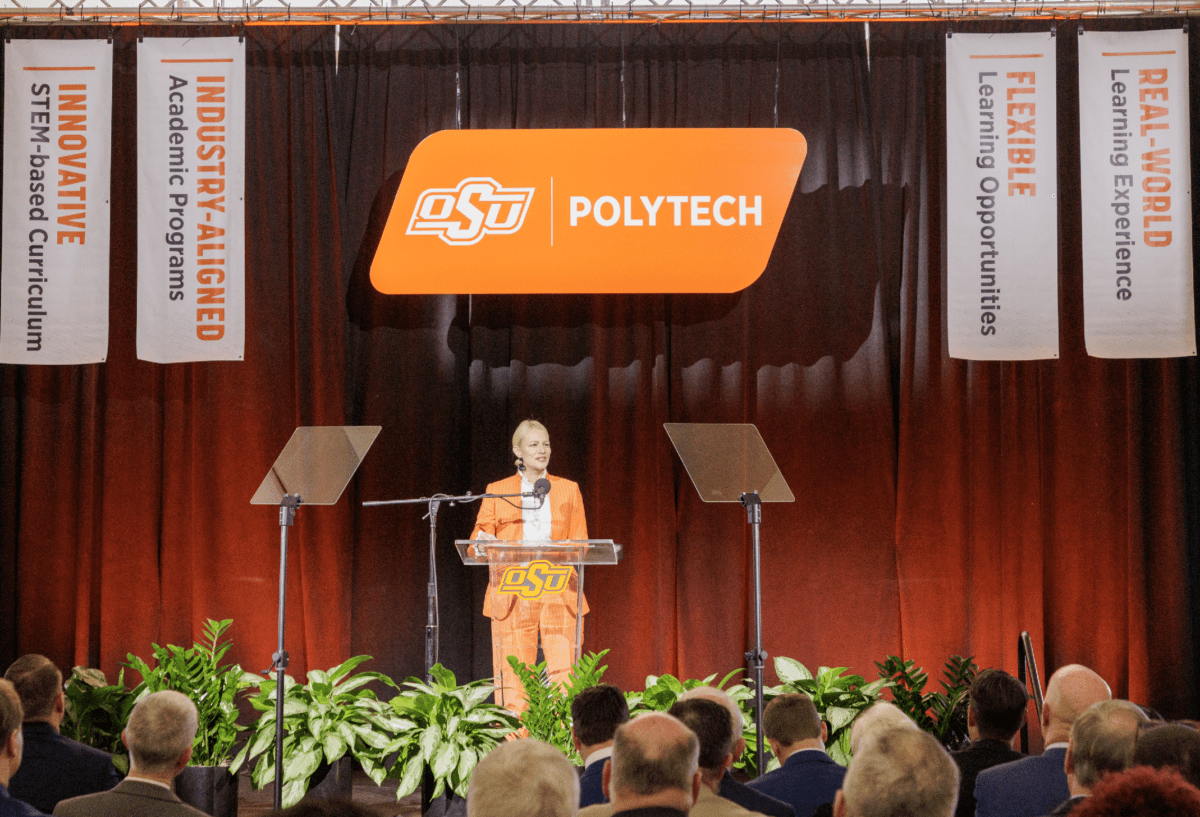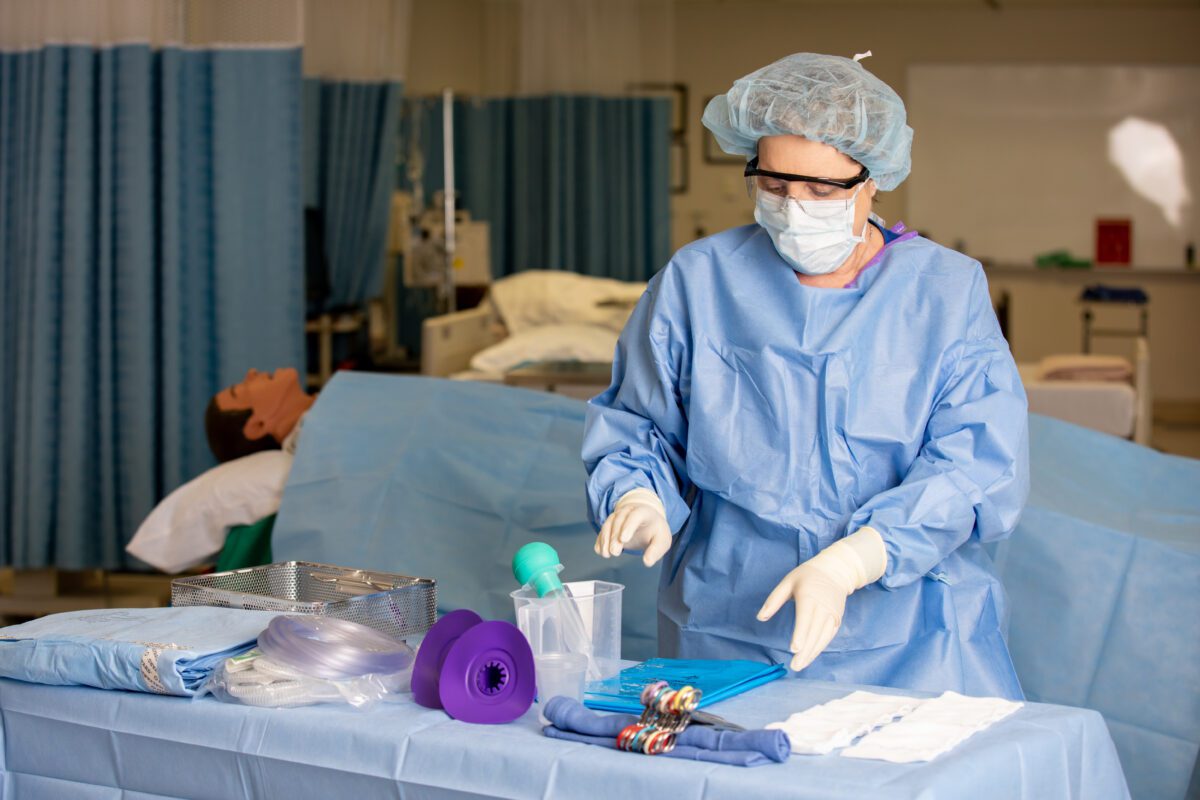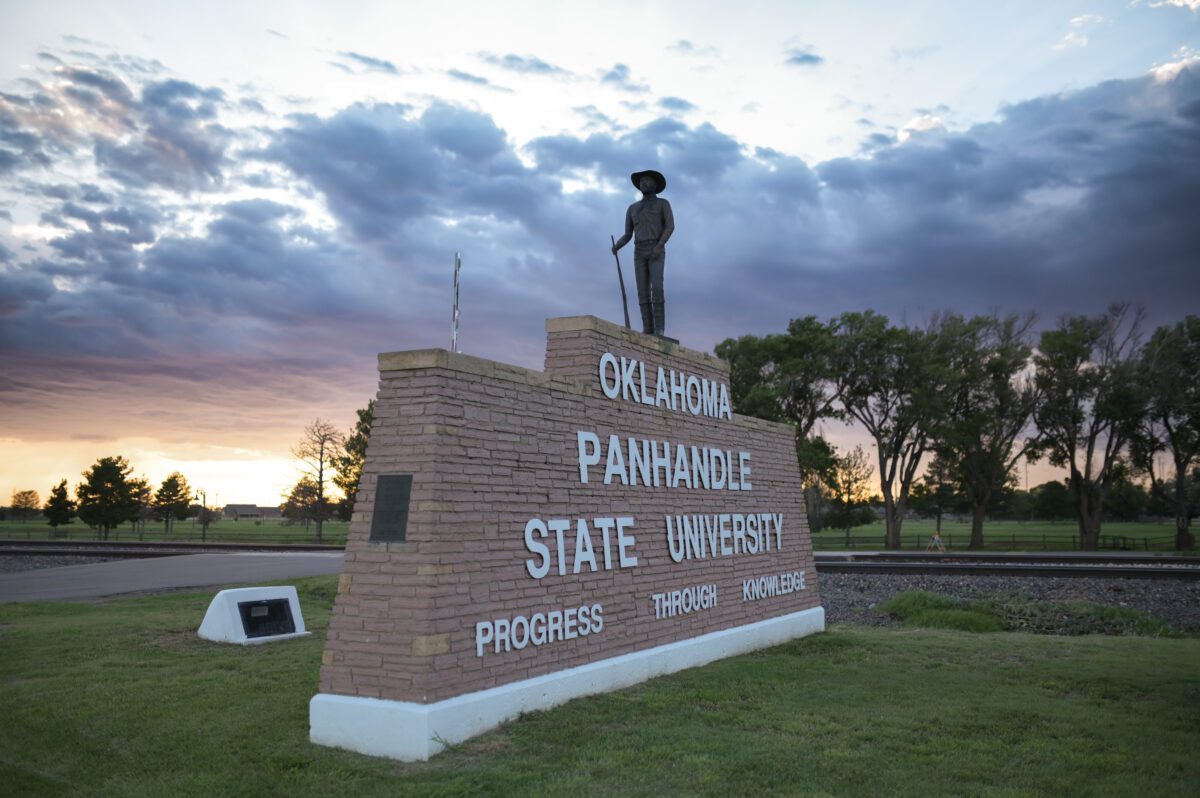Trends in Education: What’s New and What’s Next
The world of education is fast-moving, with existing and emerging trends impacting the scholastic landscape – including reduced enrollment barriers, an uptick in artificial intelligence usage, increased student support and high-return academic programs to help ensure students earn degrees they can truly utilize.
Higher education continues to change at a rapid pace, says Jerrid Freeman, Ph.D., Northeastern State University president for student affairs and enrollment management.
“There are new and changing workforce demands – and what students are hoping to obtain,” Freeman says. “Both are influencing factors, but it is evident that students, both traditional and non-traditional, are still seeking educational opportunities. Northeastern State University continues to identify and understand the complexities of workforce demands and adjust its academic offerings to fulfill them.
Another major factor that influences education today is the need to balance the influence of technology and social media.
“AI might take the cake as the trend of the year,” says Jerrett Phillips, Ph.D., vice president for student affairs with Rogers State University. “With a plethora of higher education vendors moving swiftly to implement some version of Ai, the higher education landscape is going through a paradigm shift in terms of the student experience and customized education as services.”
Alongside navigating the turbulent waters of artificial intelligence, it’s clear that today’s students also want flexibility and a say in how they are educated, says Julie Dinger, Ph.D., present of Oklahoma Panhandle State University.
“At OPSU, we are observing significant trends that reflect today’s students’ desire for more options and flexibility in their college experience,” she says. “Students are increasingly weighing the decision to attend school versus entering the workforce, choosing between online and in-person education, and considering traditional degrees versus short-term microcredentials. Consequently, our communication strategies have evolved to articulate well-defined career pathways to students, ensuring they understand the diverse opportunities available to them.”
Another trend discussed in this space in recent years was the threat of an enrollment cliff – or a significant multi-year decline in the number of traditional-age college students. At the University of Oklahoma, it seems that this particular trend has not come to pass.
“More students than ever are choosing OU, with record incoming classes that stand in stark contrast to sharp enrollment declines nationwide,” says a media relations representative with the university. “With three consecutive record-breaking freshman classes – and the fall 2024 incoming class on track to make it four straight years for historic class sizes – the University of Oklahoma is fulfilling its promise to offer a life-changing education at exceptional value.”

Employability: How Universities Are Helping
For most, the goal of investing in a college degree is the promise of higher-paying job opportunities. Colleges are, in turn, seeking to help students become employable in addition to granting them that hard-earned degree.
Early career graduates need to present themselves to hiring managers as well-rounded employees, knowledgeable in soft and hard skills alike. To meet this need, schools are offering career readiness resources, job fairs, specific classes on succeeding in a professional environment, soft skill training, micro-credentials, internship opportunities and more.
“A college education is enriching in many ways, including, of course, career advancement,” says Jeanette Mendez, Ph.D., Oklahoma State University’s provost and senior vice president. “To empower our graduates to be competitive in this global economy, we are coordinating efforts with business and industry partners to ensure students cultivate the in-demand skills and competencies that will differentiate OSU graduates.
“From hands-on research opportunities to a skills-based learning approach and the OSU Polytech initiative, we’re intentionally crafting programs aimed at ensuring our graduates have the skills, attitude and experience employers are seeking while streamlining programs across the OSU system to allow for more flexible options for students.”
At RSU, “we teach students how to think, not what to think,” says Phillips. “Inside of each classroom, we present theory and task students with looking at real world or practical hands-on experiences.
“We develop their critical thinking skills, ensure they become effective communicators, teach them 21st century soft skills, and help them establish community on- and off-campus so they better understand teamwork and working for the greater good.”
In-Demand Skills
The most in-demand new hire skillsets sought by today’s employers include an array of soft skills paired with a command of data analytics, a knowledge of AI programming and cloud computing. The next era of our workforce is being shaped right now by the newest technology – and affected by the speed with which it is evolving, says Dinger.
“Employers are increasingly seeking graduates with strong communication skills, including verbal communication, data literacy, AI prompt engineering, presentation and conflict resolution, and relationship building,” she says. “At OPSU, we ensure our programs meet these demands by engaging with business advisory committees composed of industry and workforce leaders who assess our program outcomes and provide valuable feedback. In response to these insights, we have integrated business communications into our general education curriculum. This industry-informed coursework provides our students with a competitive advantage in the workforce.”
At OU, says a rep with the school, “supporting Oklahoma’s workforce is one of [our] key priorities, and OU has significantly expanded enrollment in several key academic areas to support workforce demands, such as nursing, aviation and engineering. This fall, the OU Polytechnic Institute at OU-Tulsa welcomes its inaugural class. Combining cutting-edge curriculum in critical STEM fields with on-site training, the institute will equip graduates to transform Oklahoma industries and fuel economic prosperity.”

Helping Students Feel Safe
Student protests are as old as the concept of higher education – but with the ubiquitous nature of social media, such outcries have the power to gain more traction and incur more possible dividedness than ever before. Universities toe the line between supporting student rights while seeking to remain impartial to a certain student group, and above all, ensuring all students feel safe and welcome.
“RSU is a community of learners and, as such, we educate our students on how to be learned individuals about contemporary topics impacting our nation,” says Phillips. “Additionally, we help students learn to be objective and see all sides of an issue. We teach students to be civil in their discourse and expression of ideas. Generally, we have created a community that reflects the University’s mission and values, which allows us the opportunity to respect one another’s view and perspective.”
At OSU, “we support free speech and an environment that encourages the sharing of different ideas and perspectives,” says Mendez. “A robust public discourse is a positive contribution to the process of addressing society’s most pressing challenges, which is our charge as a land-grant institution. But we understand some issues are sensitive, and OSU offers a full complement of mental health and support services to ensure that all students, faculty and staff are heard, valued and supported.”
Personalized Learning: The Future of Higher Education
No two students are the same – and how each student learns is unique. Some students have ample time and energy for studying and preparing coursework because they are students only, while others are parents or have full-time jobs to support themselves. No matter the situation, any and all students deserve their shot at a college degree – and schools are working to best meet both the collective and individual needs of students.
“At RSU, we maintain small class sizes so that faculty can get to know their students by name and journey,” says Phillips. “We encourage 1:1 meeting opportunities with instructors and staff so that we not only teach a subject, but how to navigate business processes as well. We develop opportunities for peer-to-peer experiences that help students self-reflect about their own learning and experiences, while helping others at the same time.”

At OSU, says Mendez, “we know each of our students has their own unique ideas and ambitions. They also have their own unique challenges, and we’ve crafted programming and resources to help all students succeed. With in-person, online and hybrid course options and a streamlined OSU system which includes our Stillwater, Tulsa, OSU-CHS, OSUIT and OSU-OKC locations, we are meeting students’ needs and meeting them where they are. “
OSU’s commitment to student needs is exemplified by QS Stars, a university rating system used by institutions worldwide which recently awarded OSU a 5-Star rating for its learning environment. The university was evaluated based on teaching indicators like faculty-student ratio, student satisfaction, retention rates and learning management system effectiveness. This ranking, Mendez says, reflects OSU’s commitment to crafting a learning environment where all students can learn and flourish.

The Price of an Education
It’s no secret that higher education costs continue to rise. In fact, between 1980 and 2020, the average price of tuition, fees, and room and board for an undergraduate degree increased 169%, according to a recent report from the Georgetown University Center on Education and the Workforce. While much of the cost increase is due to inflation, other factors are at work.
“The rising cost of higher education is influenced by many factors, and for OPSU, these are predominately external factors, including escalating health and property insurance costs, increased utility and operational expenses due to aging infrastructure – the average age of a building on our campus 60 years – and higher costs from contractors and vendors,” says Dinger.
Expenses associated with regulatory compliance contribute to the financial burden, she says. But the university is working to keep things affordable.
“To combat these costs, OPSU is committed to keeping education affordable,” says Dinger. “We operate a financial aid optimization process, ensuring that 100% of our students receive scholarships or grants, with 61% receiving Pell grants. Our dedication to helping students access higher education has earned us the No. 1 ranking in Oklahoma by Nasdaq for affordability.”

Financial literacy for students taking on loans is another critical component of the university’s support system. This includes financial consulting through a financial aid team that “provides proactive and comprehensive financial literacy training, while our business office engages in proactive financial advising, helping students understand that education is an investment in their future and helping them make wise financial choices to treat education as a smart investment.”
NSU also focuses on remaining cost effective, says Freeman.
“It’s the only way to thrive in our new economic structure and system,” he says. “NSU continues to set itself apart from other institutions as a partner in students’ academic journey. Northeastern is here to help each scholar through the inevitable roadblocks and to remain a safe and caring place where students can find the support they need.”
At OSU, leadership understands the financial burden college can take upon students.
“Our goal is to lower the average debt of students who graduate with debt to $3,000 per year, and increase the percentage of students graduating student debt free to 60% beginning fall of 2026.” says Mendez. “It’s an ambitious goal, but at OSU, we’re fully committed to serving our students, supporting them and empowering them to reach their educational goals. And that begins with student access and affordability.”
The OSU/A&M Board of Regents’ recent decision to keep tuition and mandatory fees flat for a third straight year – marking five out of the last six years without an increase – is further reflection of OSU commitment.

“Reducing student debt and prioritizing affordability are key factors in our effort to improve student retention, but student success also hinges on academic preparedness,” she says. “Our academic advisors are critical to student success and retention, and we aim to increase advising capacity by 20% as part of our strategic goal to increase our six-year graduation rate by 10% by 2027.”
A representative for OU says that a degree from its institution “is more affordable than it was five years ago. At a time when the cost of higher education is skyrocketing at other institutions nationwide, over the past five years, OU has grown need-based aid by 38%, increased the number of scholarships awarded by more than 20% and saved over $140 million in annual operating costs. As a result, 56% of OU undergraduate students graduate debt-free, compared to 45% at four-year public universities nationwide. OU’s commitment to keeping a college degree affordable and attainable, especially for those with the greatest need, is profound and has translated into real cost-savings.”























